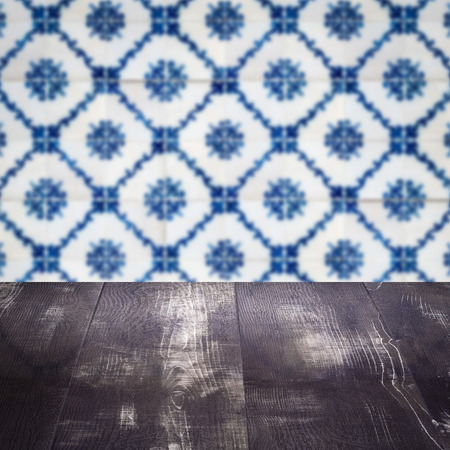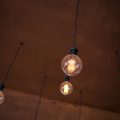1. Introduction to Kitchen Flooring in U.S. Homes
When it comes to remodeling or building a home, one of the most important decisions American homeowners face is choosing the right kitchen flooring. The kitchen is more than just a place to cook—its often the heart of the home, where families gather, kids do homework, and guests mingle during parties. That’s why picking the best flooring option isnt just about looks—it’s also about practicality and long-term value.
Several key factors play into selecting the ideal kitchen flooring for U.S. homes:
Durability
Kitchens see a lot of foot traffic, accidental spills, and dropped pots or utensils. That means your floor needs to be tough enough to handle daily wear and tear. Some materials are better suited for high-traffic areas than others.
Style
Your kitchen flooring should complement your homes overall design. Whether youre going for modern, rustic, traditional, or coastal vibes, the right material and color can tie the entire space together.
Maintenance
No one wants to spend hours scrubbing floors. Some materials require sealing or special cleaners, while others are easy to wipe down with a damp mop. Maintenance needs can vary greatly depending on what you choose.
Regional Preferences
The climate and lifestyle in different parts of the U.S. can influence flooring choices. For instance, tile is popular in warmer states like Florida and Arizona because it stays cool underfoot, while hardwood is often preferred in New England homes for its classic charm and warmth.
Quick Comparison of Key Factors
| Flooring Type | Durability | Style Variety | Ease of Maintenance | Best For Regions |
|---|---|---|---|---|
| Tile | High | Wide Range | Easy | Southern & Southwestern States |
| Hardwood | Medium to High (with care) | Classic & Elegant | Moderate (needs refinishing over time) | Northeast & Midwest |
| Vinyl | Medium to High | Diverse Designs | Very Easy | Nationwide Use |
| Laminate | Medium | Looks Like Wood or Stone | Easy (avoid standing water) | Nationwide Use |
This guide will help you compare the most popular kitchen flooring options—tile, hardwood, vinyl, and laminate—so you can make an informed decision that fits your lifestyle, budget, and taste.
2. Tile Flooring: Traditional Yet Timeless
Tile flooring remains one of the most popular choices for American kitchens, offering a classic look that fits both traditional and modern home styles. When it comes to tile, homeowners typically choose between ceramic and porcelain options. Both are made from natural clay materials and fired in a kiln, but they differ in durability, water resistance, and cost.
Ceramic vs. Porcelain Tile
| Feature | Ceramic Tile | Porcelain Tile |
|---|---|---|
| Durability | Moderate – suitable for light to moderate foot traffic | High – ideal for heavy foot traffic areas like kitchens |
| Water Resistance | Good – glazed ceramic resists moisture fairly well | Excellent – denser and less porous than ceramic |
| Design Options | Wide variety of colors and patterns; easier to cut into shapes | Slightly fewer color options but often mimics stone or wood finishes very realistically |
| Cost | $1–$5 per sq. ft. | $3–$10 per sq. ft. |
| Lifespan | Around 20 years with proper care | 30+ years with proper maintenance |
| Main Drawback | Brittle; may chip under heavy impact | Tougher to cut; installation can be more complex and expensive |
The Pros of Tile Flooring in Kitchens
- Makes Cleanup Easy: Spills, grease, and food messes wipe right off without staining the surface.
- Tough Against Wear: Both ceramic and porcelain tiles handle high foot traffic very well.
- Aesthetic Versatility: Available in endless styles—from rustic terracotta looks to sleek, modern marble effects.
- Cools Naturally: Especially great for warmer climates where tile stays cooler underfoot than other materials.
- Mold & Mildew Resistant: Perfect for kitchens where moisture can be an issue.
The Cons to Consider
- Cold & Hard Underfoot: Not the most comfortable if you spend long hours cooking or standing at the counter.
- Poor Sound Absorption: Tiles can create echoing or amplify noise in open-plan homes.
- Difficult Repairs: If a tile cracks, replacing it can be tricky—especially if the original tile is discontinued.
- Poor Impact Resistance: Dropping heavy items like pots or glassware may result in chips or cracks.
- Slick When Wet: Some smooth-finish tiles can become slippery when wet unless treated with a non-slip coating.
Is Tile Right for Your Kitchen?
If youre looking for a flooring option that combines durability with design flexibility, tile—especially porcelain—is a strong contender. Its ability to resist water, wear, and stains makes it especially suited for busy family kitchens or homes with pets. Just keep in mind that while its tough against traffic, it might not be as forgiving on your feet or dropped dishware.

3. Hardwood Flooring: Warmth and Value
Hardwood flooring is a timeless choice that brings natural beauty and warmth to any kitchen. Many American homeowners love the classic look of hardwood, especially in open-concept homes where the kitchen flows into living or dining areas. It adds a sense of continuity and elegance that’s hard to beat.
The Appeal of Hardwood in Kitchens
One of the biggest draws of hardwood flooring is its visual warmth. Real wood grain patterns and rich tones can make your kitchen feel more inviting and cozy. Whether you choose oak, maple, hickory, or another type of wood, each offers unique character that can match different interior styles—from farmhouse to modern.
Boosting Home Value
Hardwood floors are often seen as a high-end upgrade, which can increase your home’s resale value. Many real estate agents note that potential buyers in the U.S. tend to prefer homes with hardwood floors over other materials. It’s considered a long-term investment that pays off when it’s time to sell.
Comparison: Hardwood vs Other Kitchen Flooring Options
| Feature | Hardwood | Tile | Vinyl | Laminate |
|---|---|---|---|---|
| Aesthetic Appeal | High – Natural & Elegant | Varies – Classic to Modern | Moderate – Many Styles | Moderate – Wood-Look Options |
| Adds Resale Value | Yes | Slightly | No | No |
| Durability in Moisture | Moderate (Needs Sealing) | Excellent | Excellent (Waterproof Types) | Good (Water-Resistant Only) |
| Main Drawback | Sensitive to Moisture & Scratches | Cold & Hard Underfoot | Can Look Less Authentic | Sensitive to Water Damage Over Time |
Caring for Hardwood Floors in the Kitchen
Kitchens are high-traffic and prone to spills, so hardwood requires proper care. Using rugs or mats near sinks and dishwashers helps protect against water damage. Regular sweeping and using wood-safe cleaners keep the surface looking great. Some homeowners choose engineered hardwood for better moisture resistance compared to solid hardwood.
Tips for Maintaining Hardwood in the Kitchen:
- Avoid standing water—wipe up spills right away.
- Add felt pads under furniture legs to prevent scratches.
- Select a durable finish like polyurethane for added protection.
- Mop with a damp (not wet) cloth and avoid harsh chemicals.
- If needed, refinish every few years to restore shine.
Vinyl Flooring: Budget-Friendly and Resilient
Vinyl flooring has become a popular choice for U.S. homeowners, especially in kitchens where durability and water resistance are key. Thanks to modern advancements like luxury vinyl plank (LVP), vinyl is no longer seen as a cheap or outdated option. Instead, its a stylish, affordable, and practical solution that fits many American households needs.
Why Choose Vinyl Flooring for Your Kitchen?
Vinyl stands out for its combination of budget-friendliness and resilience. It offers the look of wood or stone without the high price tag or maintenance concerns. With today’s technology, especially LVP, you can enjoy a waterproof floor thats perfect for high-traffic areas like the kitchen.
Main Benefits of Vinyl Flooring
| Feature | Benefit |
|---|---|
| Waterproof Technology | LVP and other types of vinyl are 100% waterproof—ideal for spills, splashes, and frequent cleaning in kitchens. |
| Affordability | Generally less expensive than hardwood or tile, making it a great option for families on a budget. |
| Ease of Installation | Many vinyl products offer click-lock systems or peel-and-stick backing, allowing for DIY-friendly installation. |
| Comfort Underfoot | Softer than tile and warmer than laminate—great for long cooking sessions. |
| Low Maintenance | No need for sealing or special cleaners; just regular sweeping and mopping will keep it looking new. |
| Style Variety | Available in a wide range of colors and patterns that mimic wood, stone, or ceramic tile. |
Best Situations for Vinyl in U.S. Kitchens
If your kitchen sees heavy use from cooking, entertaining, kids, or pets, vinyl is an ideal choice. Its scratch-resistant surface and waterproof core mean it can handle daily wear and tear with ease. Its also great for open-concept layouts where you want seamless transitions between kitchen and living spaces without worrying about moisture damage.
LVP vs. Traditional Vinyl Sheet Flooring
| Type | Description | Ideal For |
|---|---|---|
| LVP (Luxury Vinyl Plank) | Mimics real hardwood planks with textured finishes; usually thicker and more durable. | Kitchens aiming for a wood-look aesthetic with added durability. |
| Sheet Vinyl | A single rolled sheet that covers the entire floor area; more affordable but less realistic-looking. | Budget-conscious projects or rental properties where cost is key. |
Whether youre remodeling your forever home or upgrading a rental property, vinyl flooring provides an excellent balance of style, performance, and value—making it one of the smartest choices for American kitchens today.
5. Laminate Flooring: Stylish and Cost-Effective
Laminate flooring has become a popular choice for many American homeowners who want the look of hardwood without the high cost. It’s made from multiple layers, including a photographic layer that mimics wood, stone, or other materials, protected by a clear wear layer on top. When it comes to kitchen flooring options, laminate offers a mix of style, durability, and affordability—but it also has some drawbacks, especially in areas prone to moisture.
Aesthetic Appeal
Laminate flooring is known for its ability to replicate the appearance of hardwood or tile at a fraction of the price. Thanks to modern printing technology, today’s laminate floors come in a wide variety of finishes and textures that can complement almost any kitchen design—from rustic farmhouse to sleek modern styles.
Scratch Resistance
One of laminates strong points is its resistance to scratches and dents. The protective top layer makes it a good option for busy households with kids or pets. Its more forgiving than hardwood when it comes to everyday wear and tear, which is a big plus in high-traffic kitchen areas.
Affordability
Laminate is one of the most budget-friendly kitchen flooring options available. Not only is the material itself less expensive than hardwood or tile, but installation costs are typically lower as well. Many laminate floors are designed for DIY installation using click-and-lock systems.
Cost Comparison Table
| Flooring Type | Average Cost per Sq. Ft. (Material) | Installation Cost per Sq. Ft. |
|---|---|---|
| Tile | $2 – $10 | $5 – $10 |
| Hardwood | $5 – $15 | $4 – $8 |
| Vinyl | $1 – $6 | $1 – $4 |
| Laminate | $1 – $5 | $1 – $3 |
Limitations in Moisture-Prone Areas
While laminate performs well in terms of style and durability, its not ideal for wet environments. Kitchens often experience spills and humidity, which can cause laminate flooring to warp or swell if moisture seeps between seams. Even though some newer laminate products are water-resistant, they still dont match the waterproof capabilities of vinyl or tile.
Pros and Cons of Laminate Flooring for Kitchens
| Pros | Cons |
|---|---|
| Affordable alternative to hardwood | Sensitive to moisture and spills |
| Wide range of styles and designs | May require replacement sooner than tile or wood |
| Resistant to scratches and wear | Not as durable under heavy water exposure |
If you love the look of hardwood but need something more budget-friendly and scratch-resistant, laminate could be a great fit—just keep an eye on moisture levels in your kitchen space.
6. Making the Right Choice for Your Kitchen
Choosing the right kitchen flooring can feel overwhelming, especially with so many great options like tile, hardwood, vinyl, and laminate. To help you make the best decision for your U.S. home, its important to consider your lifestyle, budget, and overall home design.
Lifestyle Considerations
Think about how you use your kitchen. Is it a high-traffic area? Do you have kids or pets? Here’s a quick guide based on common household needs:
| Lifestyle Factor | Best Flooring Option | Why It Works |
|---|---|---|
| High foot traffic | Tile or Vinyl | Durable and easy to clean |
| Kids or pets | Laminate or Vinyl | Scratch-resistant and water-resistant |
| Frequent cooking | Tile | Heat-resistant and stain-resistant |
| Comfort underfoot | Vinyl or Laminate | Softer feel compared to tile or hardwood |
Budget Planning
Your budget will also play a big role in your flooring decision. Heres a general cost comparison per square foot for each material (including installation):
| Flooring Type | Estimated Cost (per sq. ft.) | Affordability Level |
|---|---|---|
| Vinyl | $2–$5 | Most affordable |
| Laminate | $3–$7 | Budget-friendly with style options |
| Tile (ceramic/porcelain) | $5–$10+ | Mid-range to high-end depending on type and design |
| Hardwood | $8–$15+ | Premium option with long-term value |
Matching Your Home Style
The look of your floor should complement your homes interior design. Here are some style tips:
- Modern kitchens: Go with sleek tile or dark-stained hardwood.
- Farmhouse or rustic homes: Wide-plank hardwood or wood-look vinyl works well.
- Traditional style: Classic oak hardwood or neutral ceramic tiles fit nicely.
- Contemporary spaces: Try high-gloss laminate or large-format tiles.
Tips for American Homeowners Choosing Kitchen Flooring:
#1. Think Long-Term Maintenance Needs:
If you don’t want to spend time sealing grout or refinishing wood, go for low-maintenance options like vinyl or laminate.
#2. Don’t Forget About Resale Value:
If you plan to sell your home in the future, hardwood floors often appeal more to buyers and can increase property value.
#3. Look into Local Climate:
If you live in a humid region like Florida, consider materials that resist moisture—vinyl and tile perform better than wood in these areas.
#4. Check Warranties and Lifespan:
A good warranty can give peace of mind. Tile and hardwood generally last longer but may come with higher upfront costs.
#5. Sample Before You Buy:
You can order free samples from most U.S. flooring retailers—test them in your space before committing!
Selecting the right kitchen flooring is all about balancing what works best for your daily life, your wallet, and your personal taste. With the right information, youll find a solution that feels just right underfoot every day.


